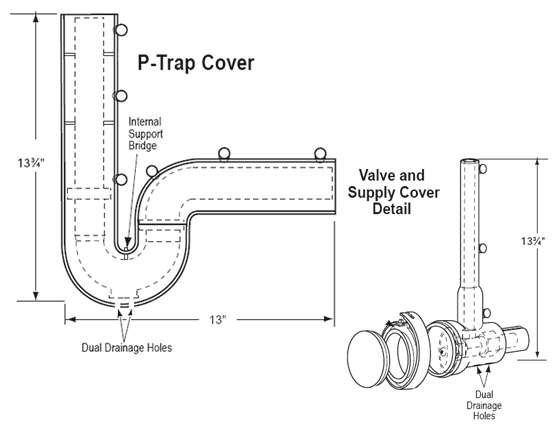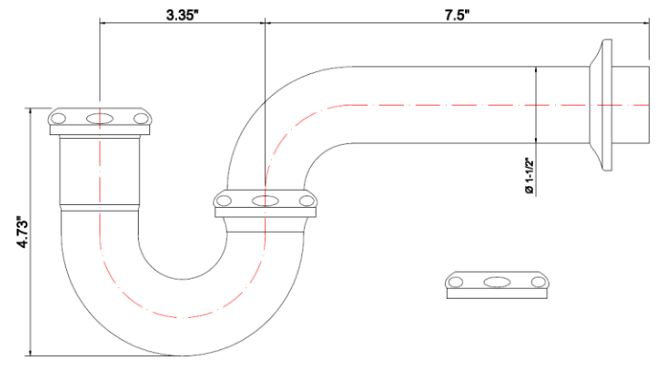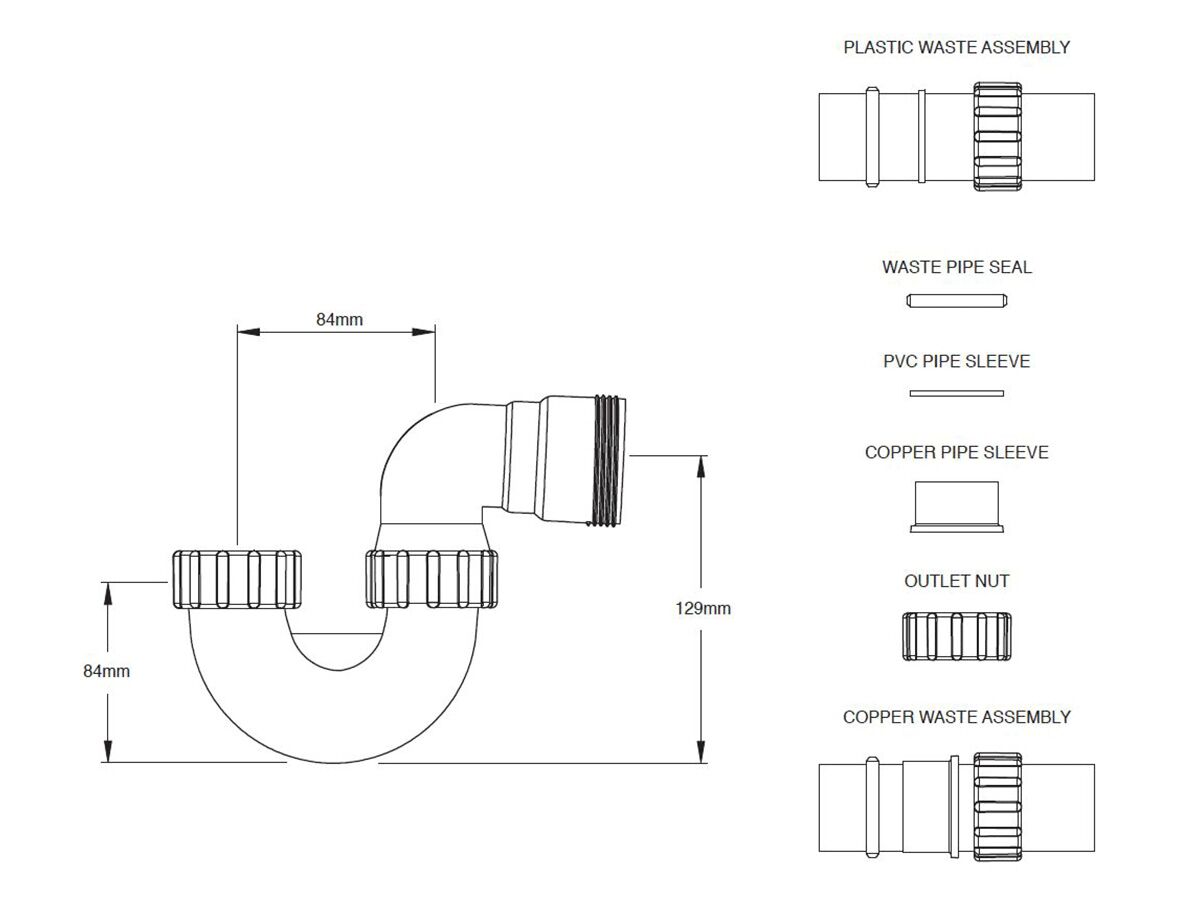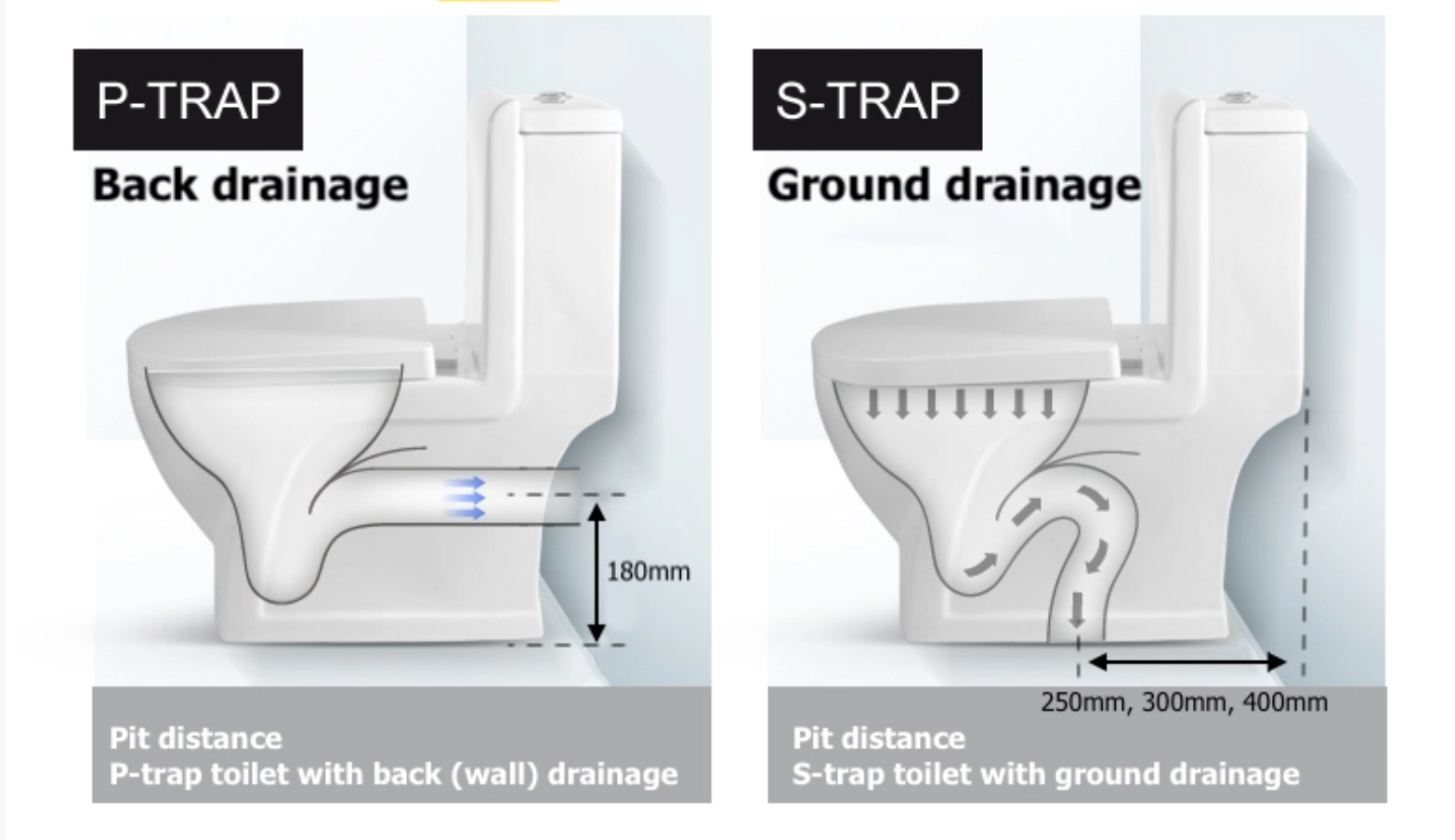What is a P trap for a kitchen sink?
If you've ever looked under your kitchen sink, you may have noticed a U-shaped pipe that connects to the drain. This is known as a P trap, and it is an essential component of your sink's plumbing system.
The name "P trap" comes from its shape, which resembles the letter P when seen from the side. But what exactly does it do and why is it important? Let's explore the world of P traps and learn more about their dimensions and uses.
How do you measure a P trap?
Measuring a P trap is a simple process that requires a measuring tape and a pen and paper to write down your measurements. Start by measuring the distance between the two openings of the trap, one that connects to the sink drain and the other that connects to the main drain pipe.
Next, measure the diameter of the openings, typically ranging from 1 1/4 inches to 2 inches. Finally, measure the depth of the trap, which can vary depending on the manufacturer and model. These measurements will give you the dimensions of your P trap.
What is the standard size of a P trap?
The standard size of a P trap is 1 1/4 inches in diameter. This is the most common size found in residential homes and is suitable for most kitchen sinks. However, some sinks may require a larger diameter P trap, such as 1 1/2 inches, if they have a larger drain opening.
The depth of a P trap can also vary, but the most common depth is between 4-6 inches. This allows for proper water flow and prevents the trap from becoming clogged with debris. It's essential to check your local plumbing codes to ensure that you are using the correct size for your area.
How do you install a P trap?
Installing a P trap is a relatively straightforward process that can be done by a professional plumber or a skilled DIYer. It involves connecting the P trap to the sink drain and the main drain pipe using compression fittings or PVC cement.
Before installing the P trap, make sure to clean and dry the connecting pipes to ensure a tight and secure fit. It's also crucial to align the trap correctly to avoid any leaks. If you're unsure of how to install a P trap, it's best to consult a professional to avoid any potential issues.
What is the purpose of a P trap?
The main purpose of a P trap is to prevent sewer gases from entering your home through the sink drain. The water that sits in the U-shaped bend of the trap creates a barrier that blocks these gases from escaping into your living space.
Additionally, the P trap also traps debris and prevents it from entering the main drain pipe, which can cause clogs further down the line. This can save you from costly plumbing repairs and keep your sink running smoothly.
What are the dimensions of a P trap?
The dimensions of a P trap can vary depending on the manufacturer and model. However, the standard size for the diameter of the openings is 1 1/4 inches, and the depth is typically between 4-6 inches.
Some P traps may have larger or smaller dimensions, so it's essential to measure and ensure that you have the right size for your sink. You can also consult a plumber or refer to your local plumbing codes for specific dimensions and requirements.
What is the minimum height for a P trap?
The minimum height for a P trap is typically around 2 1/2 inches. This allows for proper water flow and prevents debris from getting trapped in the bend. However, some local plumbing codes may have different requirements, so it's best to check before installing a P trap.
It's also crucial to ensure that the P trap is not too high, as this can cause water to drain too slowly, leading to clogs and other issues. If you're unsure of the proper height for your P trap, consult a professional plumber.
What is the maximum length for a P trap?
The maximum length for a P trap is typically around 24 inches. Anything longer than this can cause issues with water flow and can lead to clogs and odors. It's essential to measure and cut the P trap to the appropriate length before installation.
If your sink is further away from the main drain pipe, you may need to add an extension pipe to connect the P trap. In this case, it's best to consult a professional plumber to ensure that everything is installed correctly.
What materials are P traps made of?
P traps are commonly made of PVC or ABS plastic, which are durable and resistant to corrosion. However, they can also be made of metal, such as brass or copper, for added strength and durability.
The type of material used for the P trap will depend on personal preference and the application. Plastic P traps are more lightweight and easy to install, while metal P traps may be preferred for their durability and aesthetic appeal.
What is the difference between a P trap and an S trap?
The main difference between a P trap and an S trap is their shape. While a P trap has a U-shaped bend, an S trap has an S-shaped bend. Both serve the same purpose of preventing sewer gases from entering your home, but they are designed for different plumbing setups.
S traps are typically used in floor drains, while P traps are used in sinks and other fixtures that are connected to a wall drain pipe. It's essential to use the correct type of trap for your plumbing to ensure proper function and avoid any potential issues.
The Importance of Kitchen Sink P-Trap Dimensions in House Design

Understanding the Basics of P-Traps
The Importance of Proper P-Trap Dimensions
 While the basic function of a p-trap is the same, not all traps are created equal.
Kitchen sink p-trap dimensions
can vary depending on the size and design of your sink and the location of your plumbing pipes. The most common sizes for p-traps are 1 1/4 inches and 1 1/2 inches, but it is important to consult a professional plumber to determine the appropriate size for your specific kitchen setup.
Using the wrong size p-trap can lead to a host of plumbing problems, including slow draining sinks, foul odors, and even leaks. A trap that is too small may not hold enough water, allowing gases to seep into your home. On the other hand, a trap that is too large can cause water to pool, leading to clogs and blockages.
While the basic function of a p-trap is the same, not all traps are created equal.
Kitchen sink p-trap dimensions
can vary depending on the size and design of your sink and the location of your plumbing pipes. The most common sizes for p-traps are 1 1/4 inches and 1 1/2 inches, but it is important to consult a professional plumber to determine the appropriate size for your specific kitchen setup.
Using the wrong size p-trap can lead to a host of plumbing problems, including slow draining sinks, foul odors, and even leaks. A trap that is too small may not hold enough water, allowing gases to seep into your home. On the other hand, a trap that is too large can cause water to pool, leading to clogs and blockages.
How to Choose the Right P-Trap Dimensions
 When selecting the
best kitchen sink p-trap dimensions
for your home, there are a few factors to consider. First, the size of your sink and the location of your plumbing pipes will play a significant role. If your sink is located far from the main plumbing line, a larger trap may be necessary to accommodate the longer distance. Additionally, the type of sink you have, such as a single or double basin, may also affect the size of the p-trap needed.
It is always best to consult a professional plumber when choosing the right p-trap dimensions for your kitchen sink. They can assess your specific plumbing needs and recommend the proper size and type of trap for your home.
In conclusion, while
kitchen sink p-trap dimensions
may seem like a minor detail in house design, they are essential for maintaining a functional and sanitary kitchen. By choosing the right size p-trap and ensuring it is properly installed, you can prevent potential plumbing issues and keep your kitchen running smoothly. So next time you're designing a kitchen, don't forget to pay attention to the often overlooked p-trap dimensions.
When selecting the
best kitchen sink p-trap dimensions
for your home, there are a few factors to consider. First, the size of your sink and the location of your plumbing pipes will play a significant role. If your sink is located far from the main plumbing line, a larger trap may be necessary to accommodate the longer distance. Additionally, the type of sink you have, such as a single or double basin, may also affect the size of the p-trap needed.
It is always best to consult a professional plumber when choosing the right p-trap dimensions for your kitchen sink. They can assess your specific plumbing needs and recommend the proper size and type of trap for your home.
In conclusion, while
kitchen sink p-trap dimensions
may seem like a minor detail in house design, they are essential for maintaining a functional and sanitary kitchen. By choosing the right size p-trap and ensuring it is properly installed, you can prevent potential plumbing issues and keep your kitchen running smoothly. So next time you're designing a kitchen, don't forget to pay attention to the often overlooked p-trap dimensions.




/sink-drain-trap-185105402-5797c5f13df78ceb869154b5.jpg)


































































































